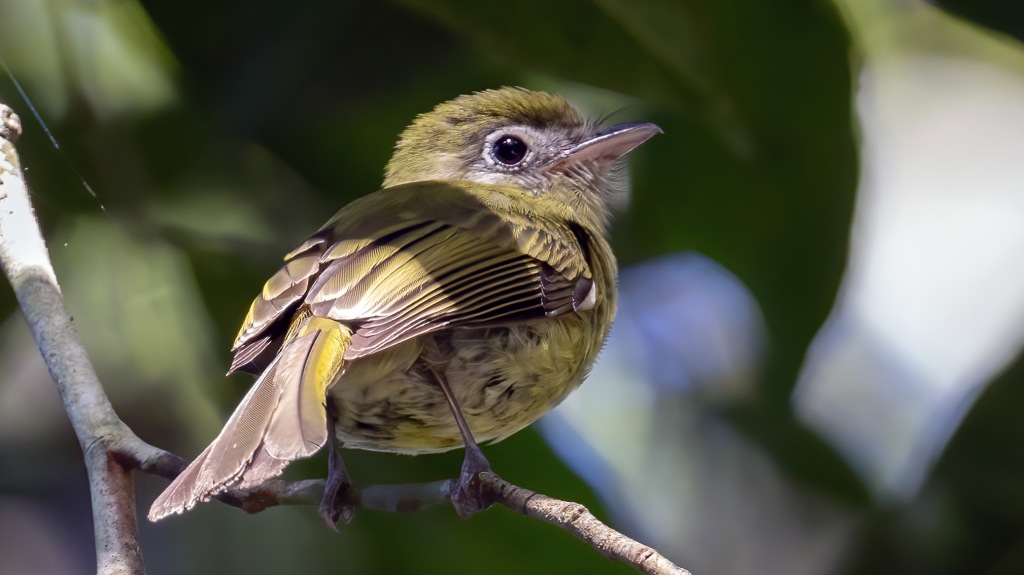
- Scientific Name: Rhynchocyclus brevirostris
- Name in Spanish (Mexico): Mosquerito Pico Plano
- ABA 4-Letter Bird Code: ERFL
- Family: Tyrannidae
- Order: Passeriformes – Perching Birds

About this Species
The Eye-ringed Flatbill (Rhynchocyclus brevirostris) is a small bird species found in Central America, including Belize. It belongs to the family of Tyrant Flycatchers and is commonly found in humid forest habitats. The Eye-ringed Flatbill is a small bird, measuring around 4 1/2″ in length and weighing approximately 1/3 oz. It is easily recognizable by the distinctive ring around its eye, which is bright in color.

The Eye-ringed Flatbill is an active bird, constantly flitting through the forest canopy in search of prey. Its diet mainly consists of insects, which it catches on the wing. The bird is also known to consume small fruits and seeds occasionally. It is a solitary bird, although pairs may be seen during the breeding season. The breeding season in Belize typically starts in March and ends in August.
The Eye-ringed Flatbill builds its nest in the fork of a tree branch, using materials such as moss, lichen, and spiderwebs. The female lays a clutch of 2-3 eggs, which are incubated for around 14 days. The chicks are altricial, meaning they are born naked and helpless and rely entirely on their parents for food and protection. The parents feed their young with small insects and other arthropods.

While the Eye-ringed Flatbill is not considered globally threatened, its populations are declining due to habitat loss and degradation. In Belize, the species is considered relatively common, although further research is needed to assess its population trends and status. Conservation efforts should focus on protecting its habitat and raising awareness of the species’ ecological importance.
>> Next Post on Friday, 5/19/2023 – Pale-billed Woodpecker
Previous posts from Beautiful Birds of Belize Blog
